
OR
Safety in adventure tourism flourishes through adherence to regulations
Published On: August 13, 2023 05:00 PM NPT By: Santosh Pokharel
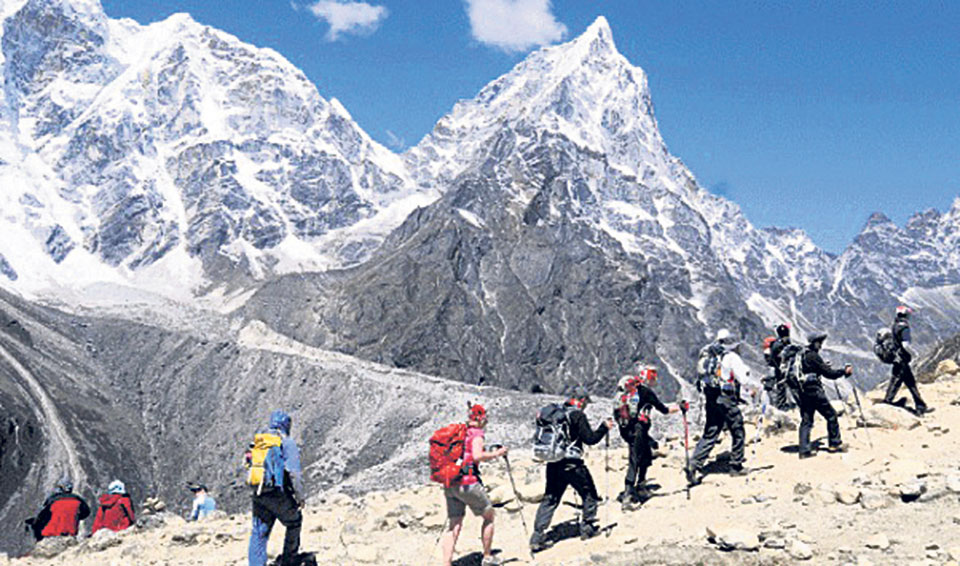
POKHARA, Aug 13: As of April 1, the Nepal Tourism Board has introduced a mandatory guide requirement for foreign tourists embarking on treks within the country. This decision aims to enhance trekker safety by ensuring that travelers are accompanied by experienced guides provided by trekking companies.
The move comes in response to concerns raised by tourism entrepreneurs regarding the potential risks faced by tourists trekking alone in remote areas. Instances of tourists getting lost or encountering various challenges while hiking independently have prompted the call for increased safety measures.
Dharmaraj Panthi, president of the Trekking Agencies Association of Nepal (TAAN), Gandaki chapter, emphasized the positive impact of this new regulation. He highlighted a decrease in incidents since its implementation and emphasized that the guidance of a qualified trekking guide offers an added layer of reassurance for both tourists and tourism professionals.
To enforce the guide requirement, stringent checkposts have been established at key trekking points such as Tatopani, Jomsom, Birethanti, Pothana, and Dharapani in Manang. This measure aims to ensure compliance and prevent trekkers from embarking on solo journeys, ultimately fostering safer trekking experiences.
Panthi stressed the collective responsibility to prioritize safety, stating, "The upcoming treks will be group-oriented, even if it's a group of just two individuals — a tourist and a guide. This approach ensures safety and minimizes potential risks."
Prior to the COVID-19 outbreak in Nepal, the Nepal Tourism Board reported that 46,142 tourists engaged in 'free individual trekking' during 2019. Since the regulation's enforcement, accidents have also decreased in other adventure activities, such as paragliding, underscoring the efficacy of adhering to safety protocols.
Similarly, paragliding incidents, including fatalities and injuries, have notably declined since the regulations were implemented. The decision to make paragliding flights safer was triggered by a series of incidents, culminating in the tragic death of Nissim Thapa, a participant in the 9th National Games, during a paragliding accident in Pokhara on October 16, 2022.
Following this incident, the Civil Aviation Authority of Nepal (CAAN) swiftly imposed an indefinite ban on solo paragliding flights. While tandem commercial paragliding flights resumed in Pokhara, the resumption of single flights remains pending.
This was not the sole regulatory measure enforced concerning paragliding flights. Prior to this incident, in November 2022, a tragic paragliding accident claimed the life of 38-year-old pilot Raju Gaire in Pokhara. While paragliding accidents had been documented in Pokhara's skies before Gaire's unfortunate incident, most were attributed to solo (single) or trainee flights. Of note, Gaire's accident occurred during a tandem (passenger) flight, marking the first instance of a pilot's fatality in such a scenario.
Following Gaire's accident, the paragliding community and observers alike raised pressing questions about safety measures within Pokhara's paragliding operations. Criticism was directed towards pilots who engaged in unconventional activities such as collecting flowers, touching water bodies, and other stunts in attempts to entertain passengers and provide an exhilarating adventure. Consequently, regulatory authorities took action against pilots engaging in such practices.
In response to the tandem flight tragedy, a series of stringent measures were introduced to enhance paragliding safety standards. Rajesh Bamjan, the former president of the Nepal Airsports Association (NAA), the overarching body for paragliding professionals, explained, "The paragliding sector has now undergone a significant transformation. Presently, incidents of concern have been notably curtailed, and both human and material losses have been minimized."
Bamjan highlighted the evolution of flying practices, emphasizing that the casual approach of the past is no longer acceptable. The application of technology has become paramount in ensuring safety.
One key aspect of this evolution is the mandatory use of GPS trackers by paragliding pilots during their flights, a measure instituted to enhance oversight. Additionally, a radio communication system between pilots is now a prerequisite, enhancing real-time coordination and support. "The incorporation of technology is now a requirement, significantly elevating the safety of flight operations. The combination of GPS tracking and radio communication empowers us to monitor the flight path and adherence to safety protocols," Bamjan elaborated. "Pilots are no longer free to fly as they please. Swift action can be taken should any deviations occur."
Bamjan stressed the integration of regulations, legal frameworks, and technological advancements to ensure the safety of adventure activities. He warned that overlooking technology could potentially lead to sporadic safety issues in adventure activities within the Pokhara region.
Jagannath Niraula, the spokesperson for CAAN, emphasized the pivotal role of adhering to regulations in ensuring the safety of any adventure activity. "Maintaining a strict adherence to rules is paramount. When there's leniency, individuals may erroneously assume they have unrestricted freedom. The tightening of regulations in paragliding has correspondingly led to a decline in adverse incidents," Niraula noted. He further added, "While we recognize the importance of rule compliance, unforeseen accidents can still occur during flights. Initially, the CAAN aimed to refrain from intervening in Pokhara's paragliding operations, but instances of rule violations necessitated our intervention."
Niraula expounded on the multifaceted approach to enhancing flight safety, encompassing vigilant flight monitoring, pilot activities oversight, thorough health evaluations, meticulous assessment of flight materials, and the integration of technology. "Paragliding pilots were well-acquainted with these critical aspects; however, some instances of non-compliance contributed to untoward incidents," he observed. "Yet, with the current concerted adherence to rules, the overall safety landscape has notably improved."
You May Like This
-1200x560_20231227164155.jpg)
Nepal achieves record-high influx of tourists in March, the highest in last four years
KATHMANDU, April 2: Nepal’s tourism industry seems to have bounced back with a notable number of foreigners arriving via air... Read More...

Actors duo Rajesh Hamal and Bhuwan KC propose to promote tourism through films
Chairman of the Film Development Board Bhuwan KC and Actor Rajesh Hamal have proposed to work in partnership with Nepal... Read More...
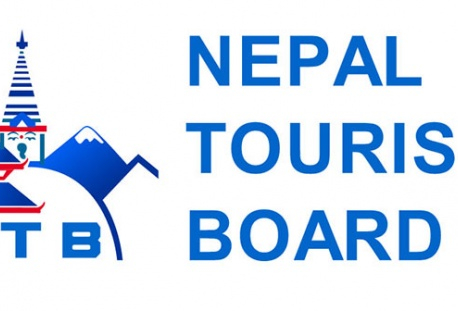
NTB bringing Rs 1.5 billion budget
KATHMANDU, Aug 17: Nepal Tourism Board (NTB) is preparing a budget of around Rs 1.5 billion for the current fiscal... Read More...
Just In
- World Day for Safety and Health at Work being observed today
- Almost all sectors of Nepal are open for foreign investment: NC President Deuba
- Second T20 match: West Indies ‘A’ sets 161-run target for Nepal
- Nepal Investment Summit (live)
- Ilam-2 and Bajhang 1(a) by-elections: Vote counting begins
- Nepal is a prime destination for international investment: FinMin Pun
- President Paudel issues ordinance related to facilitation of investment
- Hearing on Cricketer Lamichhane’s appeal today







-1200x560-wm_20240427144118.jpg)



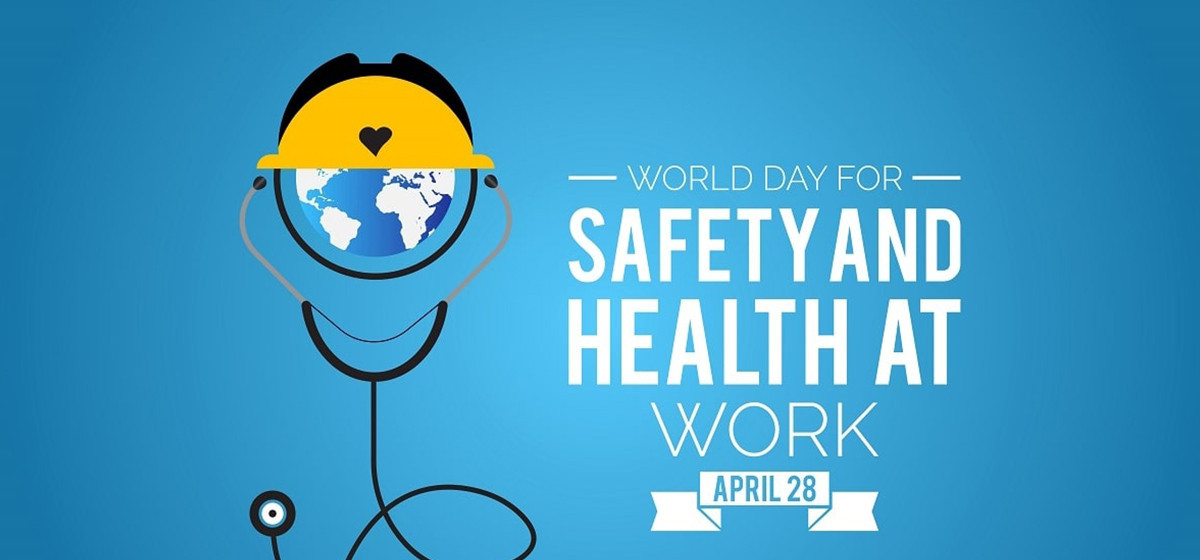


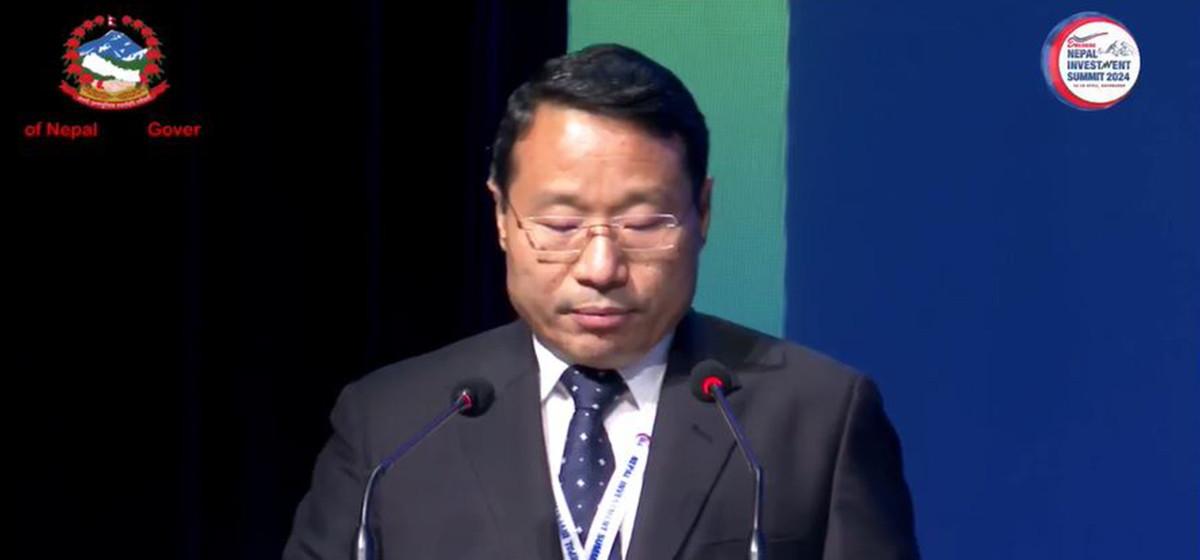
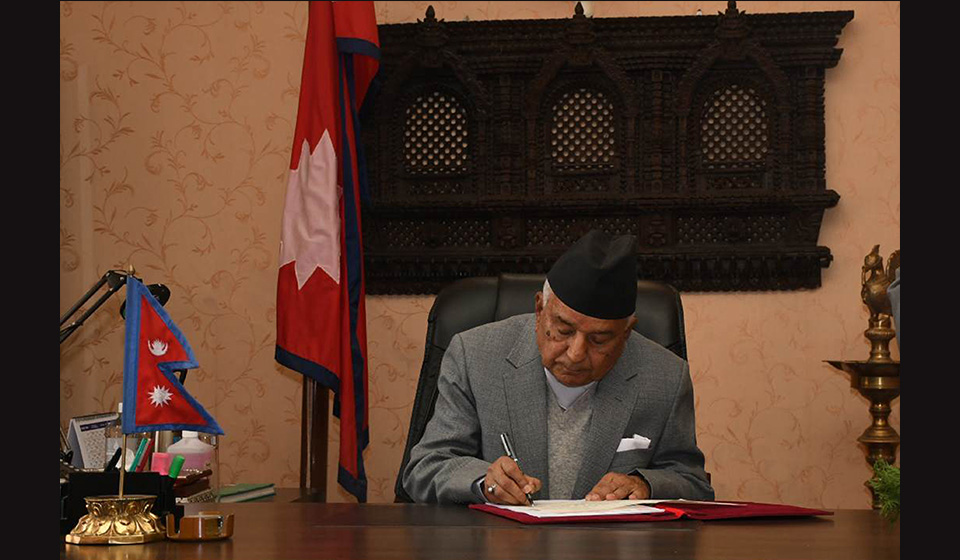

Leave A Comment